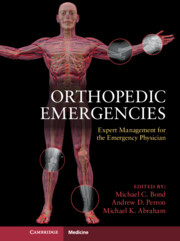
- Cited by 1
-
Cited byCrossref Citations
This Book has been cited by the following publications. This list is generated based on data provided by Crossref.
Au, John Palmer, Edward Johnson, Ian and Chehade, Mellick 2018. Evaluation of the utility of teaching joint relocations using cadaveric specimens. BMC Medical Education, Vol. 18, Issue. 1,
- Publisher:
- Cambridge University Press
- Online publication date:
- November 2013
- Print publication year:
- 2013
- Online ISBN:
- 9781139199001
- Subjects:
- Emergency Medicine, Medicine, Surgery




